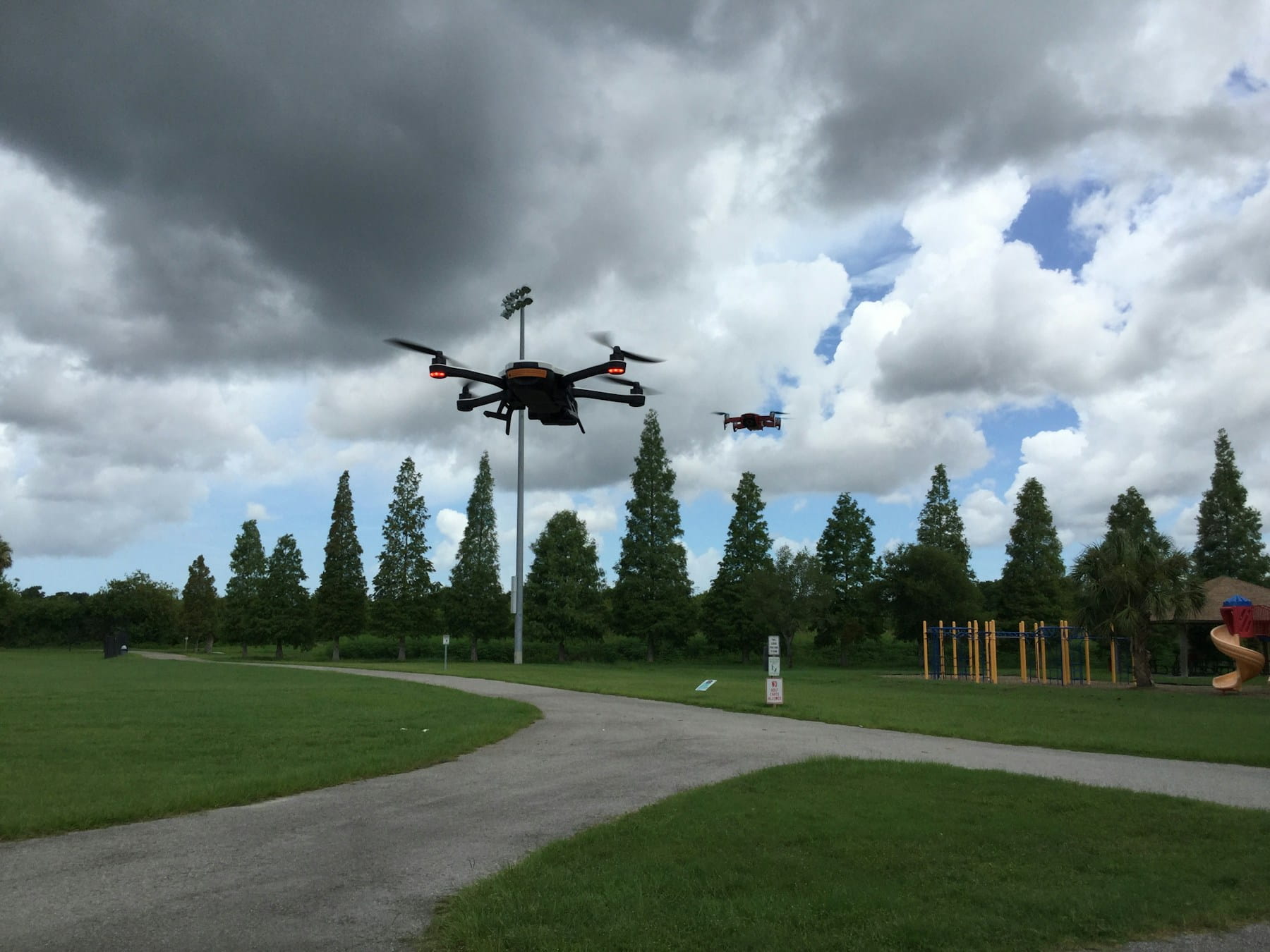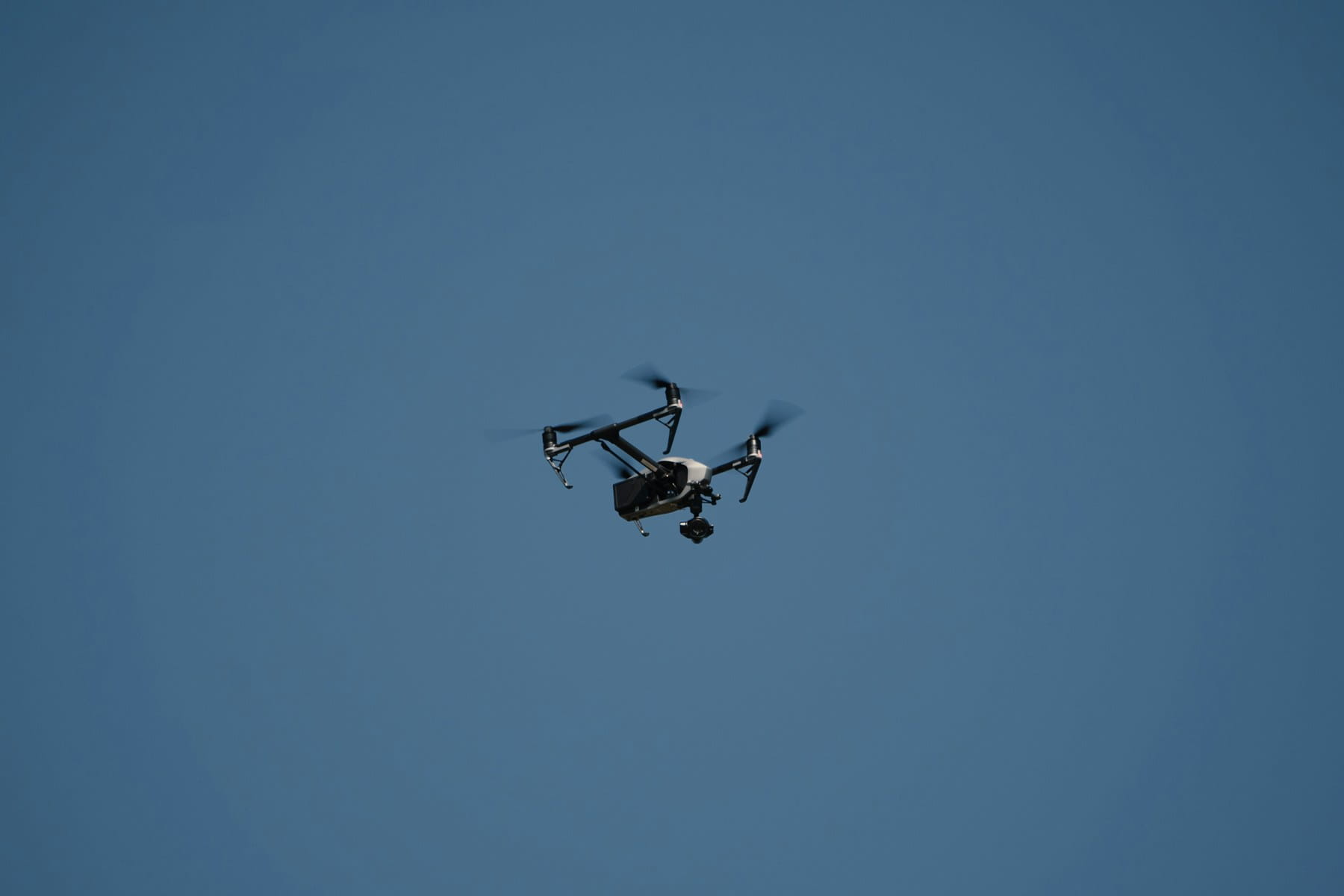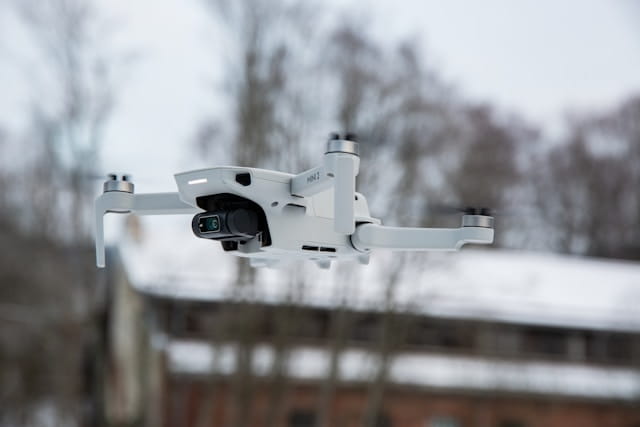Effective drone fleet management streamlines operations, enhances safety, ensures regulatory compliance, and maximizes efficiency across multiple aircraft, pilots, and projects for commercial success.
Picture this: It's 6 AM and your operations center is already buzzing with activity. Five drones need to inspect power lines across three states today, while three more aircraft are scheduled for construction site monitoring in urban environments. Two pilots called in sick, one drone has a gimbal issue, three batteries failed overnight charging, and your biggest client just moved up their deadline by 24 hours.
This scenario plays out daily in commercial drone operations that have outgrown single-aircraft simplicity but haven't yet implemented systematic fleet management. The transition from managing one drone to coordinating dozens creates operational complexity that can cripple even well-intentioned businesses.
Here's the brutal truth: manual coordination methods that work for small operations become liability magnets as fleets scale. Missed maintenance schedules ground aircraft unexpectedly, double-booked pilots create client service disasters, and compliance gaps trigger regulatory violations that threaten operational licenses. The companies that master fleet management early establish insurmountable competitive advantages over those still struggling with spreadsheets and good intentions.
Table of contents
- Core components of drone fleet management
- Flight data analysis and monitoring
- Maintenance scheduling and tracking
- Battery management systems
- Regulatory compliance and reporting
- Pilot certification and training management
- Asset tracking and inventory control
- Operational workflow optimization
- Data integration and analytics
- Risk management and insurance considerations
- Technology platforms and software solutions
- Implementation strategies
- Cost considerations and ROI analysis
Core components of drone fleet management
Fleet management encompasses several interconnected systems that work together to optimize operations. Each component plays a role in maintaining efficiency, safety, and profitability across commercial drone programs.
Aircraft tracking forms the foundation. Operators need real-time visibility into where each drone is located, its operational status, and current deployment. This includes physical location, maintenance status, battery levels, and availability for upcoming missions.
Mission planning coordination becomes complex with multiple aircraft and crews. Scheduling conflicts arise when the same drone is needed for different projects simultaneously. Weather delays cascade through the schedule, affecting subsequent flights and client commitments.
Resource allocation extends beyond just the aircraft themselves. Pilots, batteries, memory cards, spare parts, and support equipment all require coordination. A drone might be available, but if the certified pilot is busy elsewhere or the batteries are depleted, the mission cannot proceed.
Performance tracking across the fleet reveals patterns that individual flight analysis might miss. Some aircraft might consistently perform better in certain conditions. Specific pilots might excel at particular mission types. These insights only emerge when data is aggregated and analyzed systematically.
Communication systems keep teams connected across distributed operations. Field crews need updates from operations centers. Clients require status reports. Regulatory bodies might request documentation. Managing these information flows manually becomes impossible at scale.
Flight data analysis and monitoring
Modern drones generate massive amounts of telemetry data during each flight. GPS coordinates, altitude readings, gimbal positioning, battery voltage, temperature sensors, and countless other parameters create detailed records of every mission. Comprehensive flight data monitoring transforms this raw information into actionable operational insights.
Raw data alone provides limited value. The key lies in processing this information to extract actionable insights. Flight pattern analysis can identify inefficient routes that waste battery power. Altitude variations might indicate pilot technique issues or environmental challenges that require attention.
Battery performance tracking reveals degradation patterns before they cause mission failures. Voltage drops under load, charging cycle counts, and capacity measurements help predict when replacements will be needed. Some batteries might show problems after 50 cycles while others remain healthy after 200.
Environmental correlation analysis connects flight performance with weather conditions, time of day, and seasonal factors. Wind speed impacts might be more significant for certain aircraft models. Temperature extremes could affect camera performance or flight times in ways that aren't immediately obvious.
Error pattern recognition helps identify recurring issues before they escalate. If multiple flights show similar GPS signal loss at specific locations, this might indicate interference sources that need investigation. Compass calibration problems might emerge in certain geographic areas.
The following table shows common flight data parameters and their significance for fleet management:
| Parameter | Monitoring Purpose | Alert Conditions |
|---|---|---|
| Battery voltage | Health assessment | Below 3.3V per cell |
| Motor temperature | Overheating detection | Above 80°C |
| GPS accuracy | Navigation reliability | HDOP above 2.0 |
| Vibration levels | Mechanical issues | Excessive IMU noise |
| Flight time | Mission efficiency | Deviation from planned duration |
| Wind resistance | Environmental limits | Approaching max specifications |
Predictive maintenance becomes possible when flight data is analyzed systematically. Vibration patterns might indicate bearing wear in gimbals. Motor current draw increases could signal mechanical problems developing in propeller systems. These early warning signs allow proactive maintenance before expensive failures occur.
Maintenance scheduling and tracking
Preventive maintenance keeps fleets operational and prevents costly emergency repairs. Different aircraft types require different service intervals, but tracking becomes complex when managing mixed fleets across multiple locations. Systematic approaches to fleet maintenance management prevent costly downtime and extend aircraft service life.
Service records must be comprehensive and easily accessible. Each aircraft needs documentation of every inspection, repair, part replacement, and modification performed. This information supports warranty claims, regulatory compliance, and resale value preservation.
Parts inventory management connects directly to maintenance scheduling. Knowing that propellers need replacement in 20 flight hours means little if spare propellers aren't available. Lead times for specialized components can stretch weeks or months, requiring advance planning.
Technician scheduling adds another layer of complexity. Certified maintenance personnel might be limited in number or geographic availability. Some repairs require manufacturer training or specialized tools that aren't universally accessible.
The maintenance workflow typically follows these stages:
- Inspection scheduling - Based on flight hours, calendar time, or condition triggers
- Work order generation - Detailed documentation of required tasks
- Parts procurement - Ensuring necessary components are available
- Technician assignment - Matching qualified personnel to specific tasks
- Completion verification - Quality control and record keeping
- Return to service - Testing and operational clearance
Maintenance costs vary significantly between aircraft models and operating conditions. Some drones require minimal service beyond basic cleaning and calibration. Others need frequent propeller changes, gimbal adjustments, or sensor recalibration. These patterns become apparent only through systematic record keeping.
Documentation standards must meet regulatory requirements while remaining practical for day-to-day operations. Overly complex systems discourage proper record keeping, while inadequate documentation can cause compliance problems or safety issues.
Battery management systems
Lithium polymer batteries power most commercial drones, but these energy storage systems require careful management to maximize performance and safety. Poor battery practices can ground entire fleets or create dangerous situations.
Charging cycles directly impact battery lifespan. Each charge-discharge cycle gradually reduces capacity, but the rate of degradation depends on charging practices, storage conditions, and discharge patterns. Fast charging generates heat that accelerates aging, while deep discharges stress cell chemistry.
Storage protocols become critical for large battery inventories. Batteries stored at full charge degrade faster than those maintained at 50-60% capacity. Temperature control during storage prevents thermal damage and capacity loss. Humidity can cause corrosion in charging ports and connectors.
The rotation system ensures balanced usage across battery inventories. Without systematic rotation, some batteries see heavy use while others sit idle. This creates performance variations within the fleet and reduces overall efficiency.
Battery safety protocols protect personnel and equipment. Damaged or swollen batteries pose fire and explosion risks. Charging procedures must include temperature monitoring and time limits. Transportation regulations apply when moving batteries between locations.
Performance monitoring tracks individual battery health across the fleet. Capacity measurements identify batteries losing effectiveness before they cause mission failures. Internal resistance increases indicate aging that affects power delivery under load.
Here's how battery management integrates with fleet operations:
- Pre-flight preparation: Ensuring fully charged batteries are available
- Mission allocation: Matching battery capacity to flight requirements
- Post-flight processing: Proper discharge and storage procedures
- Maintenance integration: Battery replacement scheduling
- Performance analysis: Degradation tracking and replacement planning
- Safety compliance: Handling damaged or aging batteries
Replacement planning requires understanding both performance degradation and economic factors. Batteries might retain 80% of original capacity but provide insufficient flight times for specific missions. The cost of replacement versus reduced operational capability creates complex decisions.
Regulatory compliance and reporting
Commercial drone operations face extensive regulatory oversight that varies by country, region, and application. Fleet managers must track compliance across multiple aircraft, pilots, and operational contexts simultaneously. Comprehensive compliance management systems automate tracking and ensure consistent adherence to regulatory requirements.
Pilot certification tracking ensures qualified personnel operate each aircraft type. Different drones might require different endorsements or training certificates. Expiration dates create scheduling constraints that affect operational planning.
Flight authorization requirements vary by location and mission type. Some areas require advance permission from aviation authorities. Special events or temporary restrictions can ground operations without warning. Tracking these requirements across multiple operational areas becomes complex.
Aircraft registration and airworthiness documentation must remain current for each drone in the fleet. Registration renewals, insurance requirements, and inspection certificates all have different schedules and requirements.
Record keeping requirements often specify minimum retention periods and data formats. Flight logs, maintenance records, and pilot qualifications must be readily available for inspections. Digital systems simplify storage but require backup and security measures.
The compliance workflow includes these elements:
- Requirement identification - Understanding applicable regulations
- Documentation management - Maintaining required records
- Renewal tracking - Managing expiration dates and renewals
- Reporting systems - Providing required information to authorities
- Audit preparation - Ensuring records are complete and accessible
- Violation response - Addressing compliance issues promptly
Compliance costs include direct fees for registrations and certifications, but indirect costs can be more significant. Time spent on paperwork and documentation reduces productive flight time. Administrative staff might be needed to manage complex compliance requirements.
International operations face additional complexity when regulations differ between countries. Aircraft certified in one nation might require additional approvals elsewhere. Pilot qualifications might not transfer directly between regulatory systems.
Pilot certification and training management
Skilled pilots are the foundation of successful drone operations, but managing training, certifications, and proficiency across a large team requires systematic approaches. Different aircraft types, mission profiles, and regulatory requirements create complex training matrices. Professional pilot training programs ensure consistent competency levels across growing teams.
Initial certification provides basic operational authority but doesn't address specific aircraft or mission requirements. Type ratings for different drone models ensure pilots understand unique characteristics and limitations. Some manufacturers require specific training programs before operators can purchase certain aircraft.
Recurrent training maintains proficiency and introduces new procedures or technologies. Flight skills degrade without regular practice, particularly for complex missions like precision inspections or emergency responses. Training programs must balance cost, time, and effectiveness.
Skills assessment helps match pilots to appropriate missions. Some operators excel at technical photography while others perform better with surveying tasks. Understanding individual strengths improves mission outcomes and job satisfaction.
Training records must document completed courses, practical assessments, and ongoing proficiency. These records support regulatory compliance and provide evidence of professional development. Standardized training programs ensure consistent skill levels across the team.
The training management system typically includes:
- Competency matrices - Required skills for different mission types
- Training schedules - Planned courses and recurrent training
- Progress tracking - Individual development records
- Assessment protocols - Skills evaluation and certification
- Resource allocation - Training equipment and facility scheduling
- Cost management - Training budgets and ROI analysis
Continuous learning keeps pilots current with rapidly evolving technology and procedures. New aircraft features, regulatory changes, and industry best practices require ongoing education. Online training platforms provide flexible scheduling but might lack hands-on components.
Cross-training provides operational flexibility when team members are unavailable. Pilots certified on multiple aircraft types can fill gaps in coverage. However, maintaining proficiency across multiple platforms requires additional training time and cost.
Asset tracking and inventory control
Fleet assets extend far beyond the aircraft themselves. Cameras, sensors, batteries, memory cards, cases, spare parts, and ground support equipment all require tracking and management. Lost or misplaced items can ground operations just as effectively as aircraft problems.
Physical location tracking becomes complex with distributed operations. Equipment might be at headquarters, in the field with crews, at repair facilities, or in transit between locations. Real-time visibility prevents scheduling conflicts and reduces downtime.
Condition monitoring ensures equipment reliability and safety. Cameras need calibration checks, cases require inspection for damage, and cables need testing for continuity. Preventive maintenance on support equipment prevents field failures.
Utilization analysis identifies underused assets that might be redeployed or disposed of. Some specialized sensors might see limited use while basic cameras are in constant demand. Understanding these patterns optimizes inventory investment.
Procurement planning coordinates purchasing with operational needs. Lead times for specialized equipment can extend months, requiring advance planning. Volume discounts might justify larger orders, but storage and obsolescence risks must be considered.
The inventory management workflow includes these components:
- Asset registration - Unique identification and specification recording
- Location tracking - Current position and custody assignment
- Condition assessment - Operational status and maintenance needs
- Utilization monitoring - Usage patterns and efficiency metrics
- Maintenance scheduling - Preventive and corrective maintenance
- Replacement planning - End-of-life and upgrade decisions
Security measures protect valuable equipment from theft or loss. Equipment custody procedures establish responsibility and accountability. Insurance coverage must reflect current asset values and operational risks.
Operational workflow optimization
Efficient workflows maximize fleet utilization while minimizing costs and delays. Standard operating procedures ensure consistent quality and safety across all operations, but procedures must adapt to different mission types and client requirements.
Mission planning starts with client requirements but must consider aircraft capabilities, pilot availability, weather conditions, and regulatory constraints. Complex missions might require multiple aircraft or specialized equipment that affects scheduling and cost.
Resource scheduling coordinates aircraft, pilots, equipment, and support personnel across multiple projects. Conflicts arise when the same resources are needed simultaneously. Weather delays cascade through schedules, affecting subsequent missions and client commitments.
Quality control procedures ensure deliverables meet client expectations and professional standards. Data processing workflows handle large volumes of imagery and sensor data efficiently. Backup systems protect against data loss during processing and delivery.
Client communication maintains relationships and manages expectations throughout the project lifecycle. Status updates, schedule changes, and delivery notifications require systematic approaches. Poor communication damages client relationships regardless of technical performance.
Performance metrics track operational efficiency and identify improvement opportunities. Flight hours per day, mission completion rates, client satisfaction scores, and cost per flight hour provide insight into operational effectiveness.
The optimization process follows these stages:
- Baseline assessment - Current performance measurement
- Bottleneck identification - Constraint analysis and impact assessment
- Process redesign - Workflow improvement and standardization
- Technology integration - Automation and efficiency tools
- Performance monitoring - Continuous improvement tracking
- Feedback incorporation - Staff and client input integration
Automation opportunities exist throughout the operational workflow. Automated flight planning reduces manual errors and speeds mission preparation. Data processing pipelines handle routine tasks without human intervention. Scheduling systems optimize resource allocation automatically.
Data integration and analytics
Modern fleet management generates vast amounts of data from multiple sources. Flight logs, maintenance records, financial data, client information, and performance metrics create comprehensive operational pictures when properly integrated and analyzed.
Data standardization ensures information from different sources can be combined meaningfully. Flight controllers, maintenance systems, and financial software often use different data formats and structures. Integration requires careful mapping and validation procedures.
Real-time analytics provide immediate insight into ongoing operations. Fleet status dashboards show aircraft availability, crew locations, and mission progress. Alerts notify managers of problems requiring immediate attention. Trend analysis identifies developing issues before they impact operations.
Historical analysis reveals patterns that inform strategic decisions. Seasonal demand variations affect staffing and equipment needs. Client behavior patterns influence service offerings and pricing strategies. Performance trends guide training and technology investments.
Predictive analytics leverage historical data to forecast future needs. Machine learning algorithms can predict maintenance requirements, optimal scheduling patterns, and resource allocation needs. These capabilities improve as more data becomes available for analysis.
The analytics framework includes several key components:
| Component | Purpose | Benefits |
|---|---|---|
| Data collection | Automated gathering from multiple sources | Comprehensive operational visibility |
| Data validation | Quality control and error detection | Reliable analysis foundation |
| Real-time monitoring | Current status tracking | Immediate problem identification |
| Historical analysis | Pattern recognition and trend analysis | Strategic planning support |
| Predictive modeling | Future requirement forecasting | Proactive resource management |
| Reporting systems | Information distribution and visualization | Stakeholder communication |
Privacy and security considerations become critical when handling client data and operational information. Data protection regulations might apply depending on project types and geographic locations. Access controls ensure only authorized personnel can view sensitive information.
Risk management and insurance considerations
Commercial drone operations face numerous risks that can impact safety, finances, and business continuity. Systematic risk management identifies potential problems and implements mitigation strategies before incidents occur.
Operational risks include aircraft crashes, data loss, pilot injuries, and property damage. Weather-related incidents, mechanical failures, and pilot errors create liability exposure. Client data breaches or delivery delays can damage business relationships and reputation.
Financial risks extend beyond direct operational costs. Insurance claims can increase premiums or reduce coverage availability. Client contract penalties might apply for missed deadlines or quality issues. Equipment theft or damage creates replacement costs and operational disruption.
Regulatory risks arise from changing requirements or compliance failures. Violation penalties can include fines, license suspension, or operational restrictions. New regulations might require equipment upgrades or additional training that affects profitability.
Risk assessment procedures evaluate probability and impact for identified risks. High-probability, high-impact risks require immediate attention and comprehensive mitigation strategies. Low-probability risks might be accepted if mitigation costs exceed potential losses.
The risk management process includes these elements:
- Risk identification - Systematic threat assessment across all operations
- Impact analysis - Potential consequences and cost evaluation
- Mitigation planning - Strategies to reduce probability or impact
- Insurance evaluation - Coverage adequacy and cost optimization
- Incident response - Procedures for managing actual problems
- Continuous monitoring - Ongoing risk assessment and plan updates
Insurance coverage must address specific operational risks while remaining cost-effective. Hull coverage protects aircraft values, while liability coverage addresses third-party damage claims. Professional liability insurance covers errors and omissions in service delivery.
Technology platforms and software solutions
Fleet management software platforms integrate multiple operational functions into unified systems. These platforms reduce manual work, improve data accuracy, and provide comprehensive visibility into fleet operations.
Core platform capabilities typically include flight planning, crew scheduling, maintenance tracking, compliance management, and reporting functions. Integration with external systems like weather services, mapping platforms, and client management tools extends functionality.
Cloud-based solutions offer scalability and accessibility advantages. Teams can access information from any location with internet connectivity. Automatic updates ensure everyone uses current software versions. Data backup and recovery services protect against local system failures.
Mobile applications enable field operations and remote access. Pilots can update flight logs, maintenance technicians can record service completion, and managers can monitor operations from any location. Offline capability ensures functionality when internet connectivity is limited.
Platform selection criteria should include:
- Functional requirements - Specific operational needs and workflows
- Integration capabilities - Connection with existing systems and tools
- Scalability options - Growth accommodation and performance scaling
- User interface design - Ease of use and training requirements
- Support services - Technical assistance and user training
- Cost structure - Licensing fees, implementation costs, and ongoing expenses
Customization options allow platforms to adapt to specific operational requirements. Standard workflows might not fit unique business processes or client needs. However, excessive customization can increase costs and complicate future upgrades.
Data migration from existing systems requires careful planning and execution. Historical records, current operational data, and user preferences must transfer accurately. Parallel operation periods allow verification before fully committing to new systems.
Implementation strategies
Successful fleet management system implementation requires careful planning, stakeholder engagement, and phased rollouts. Rushing implementation often creates user resistance and operational disruption that undermines long-term success.
Change management addresses the human factors that determine implementation success. Staff members comfortable with existing procedures might resist new systems or processes. Training programs, clear communication, and gradual transitions help manage resistance.
Pilot programs test new systems with limited scope before full deployment. Small teams or specific operational areas provide feedback and identify issues without affecting entire operations. Lessons learned from pilot programs inform broader rollout strategies.
Training programs must address different user needs and skill levels. Managers need comprehensive system understanding while field personnel might need only specific functional training. Ongoing training accommodates staff turnover and system updates.
The implementation timeline balances urgency with thoroughness. Rushed implementations create problems that require expensive corrections. Overly cautious approaches delay benefits and increase costs. Phased approaches balance these competing demands.
Implementation phases typically include:
- Requirements definition - Detailed specification of needed capabilities
- System selection - Platform evaluation and vendor selection
- Pilot deployment - Limited-scope testing and refinement
- Staff training - Comprehensive user education programs
- Gradual rollout - Phased expansion across operations
- Performance monitoring - Success measurement and optimization
Success metrics help evaluate implementation effectiveness. User adoption rates, operational efficiency improvements, cost reductions, and error frequency changes provide objective performance indicators. Regular assessment ensures implementations deliver expected benefits.
Cost considerations and ROI analysis
Fleet management system costs include software licensing, implementation services, training, and ongoing support. However, the return on investment comes from operational efficiency improvements, reduced errors, and better resource utilization.
Direct cost savings often come from reduced administrative overhead. Manual scheduling, record keeping, and reporting require significant staff time. Automated systems handle these tasks more efficiently and accurately.
Operational efficiency improvements reduce costs per flight hour. Better scheduling maximizes aircraft utilization while reducing crew idle time. Predictive maintenance prevents expensive emergency repairs and unplanned downtime.
Revenue enhancement opportunities arise from improved service delivery and capacity utilization. Better scheduling allows more flights per day. Comprehensive documentation supports premium pricing for professional services. Reduced errors improve client satisfaction and retention.
The ROI calculation framework includes these components:
| Cost Category | Calculation Method | Typical Range |
|---|---|---|
| Software licensing | Annual or per-user fees | $50-500 per user monthly |
| Implementation | Setup and customization costs | $10,000-100,000 |
| Training | Staff education programs | $1,000-5,000 per person |
| Hardware | Tablets, computers, network equipment | $500-2,000 per user |
| Ongoing support | Maintenance and updates | 15-25% of licensing cost |
Break-even analysis determines how long implementations take to recover their costs through operational improvements. Simple systems might pay for themselves within months while comprehensive platforms might require 12-18 months.
Hidden costs can significantly impact ROI calculations. Data migration, system integration, and workflow redesign often require more time and resources than initially expected. Realistic budgeting accounts for these potential overruns.
Fleet management transforms from a necessary overhead function into a strategic advantage when implemented thoughtfully. Professional drone service providers who master these systems deliver better results more efficiently than competitors relying on manual processes.
The DroneBundle platform provides comprehensive fleet management capabilities designed specifically for commercial drone operations. Our integrated solution handles flight planning, crew scheduling, maintenance tracking, and compliance management in a single, user-friendly system.
Whether you're managing a small team or a large enterprise fleet, DroneBundle streamlines operations while ensuring safety and regulatory compliance. The cloud-based platform scales with your business and integrates seamlessly with existing workflows.
Ready to optimize your drone operations? Try DroneBundle today and experience the difference professional fleet management makes for your business success.




